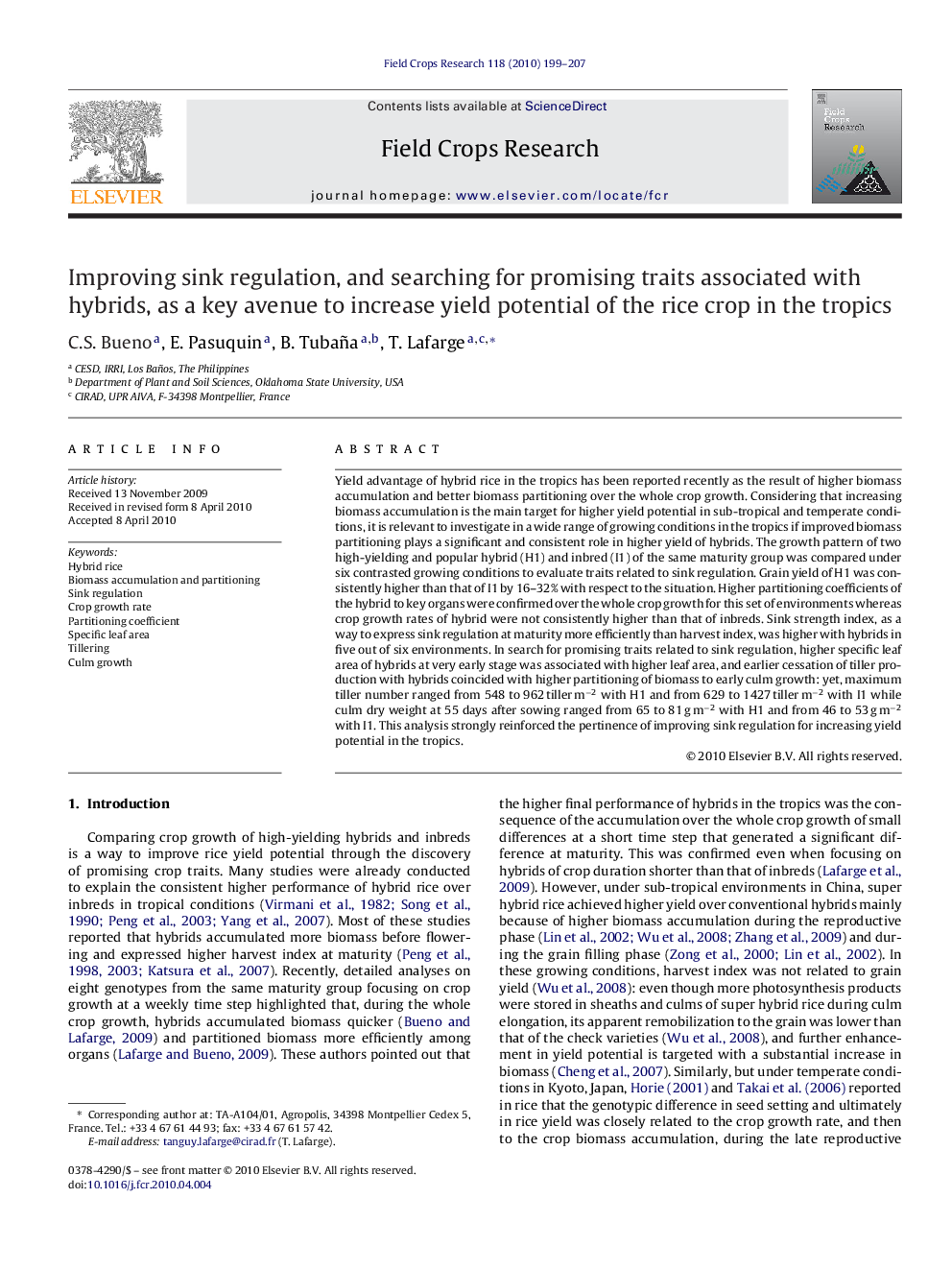| Article ID | Journal | Published Year | Pages | File Type |
|---|---|---|---|---|
| 4510937 | Field Crops Research | 2010 | 9 Pages |
Yield advantage of hybrid rice in the tropics has been reported recently as the result of higher biomass accumulation and better biomass partitioning over the whole crop growth. Considering that increasing biomass accumulation is the main target for higher yield potential in sub-tropical and temperate conditions, it is relevant to investigate in a wide range of growing conditions in the tropics if improved biomass partitioning plays a significant and consistent role in higher yield of hybrids. The growth pattern of two high-yielding and popular hybrid (H1) and inbred (I1) of the same maturity group was compared under six contrasted growing conditions to evaluate traits related to sink regulation. Grain yield of H1 was consistently higher than that of I1 by 16–32% with respect to the situation. Higher partitioning coefficients of the hybrid to key organs were confirmed over the whole crop growth for this set of environments whereas crop growth rates of hybrid were not consistently higher than that of inbreds. Sink strength index, as a way to express sink regulation at maturity more efficiently than harvest index, was higher with hybrids in five out of six environments. In search for promising traits related to sink regulation, higher specific leaf area of hybrids at very early stage was associated with higher leaf area, and earlier cessation of tiller production with hybrids coincided with higher partitioning of biomass to early culm growth: yet, maximum tiller number ranged from 548 to 962 tiller m−2 with H1 and from 629 to 1427 tiller m−2 with I1 while culm dry weight at 55 days after sowing ranged from 65 to 81 g m−2 with H1 and from 46 to 53 g m−2 with I1. This analysis strongly reinforced the pertinence of improving sink regulation for increasing yield potential in the tropics.
